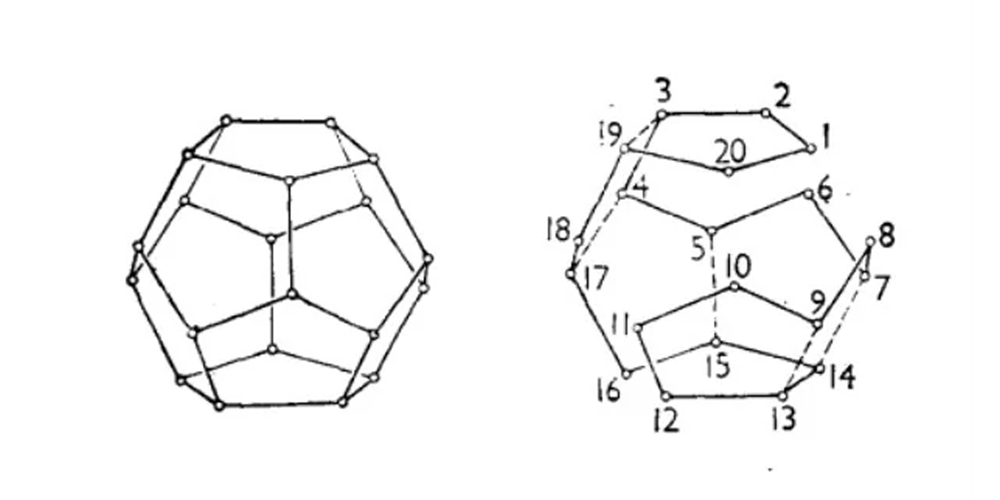
Earl William Hamilton was born in Dublin, the capital of Ireland. When he was 3 years old, he was able to read; when he was a child, he had already learned 8 languages; when he was 12 years old, he finished reading "The Original of Geometry" in Latin; when he was 16 years old, he found the great mathematician Lapla A certain mistake in the proof was made and corrected; at the age of 22, he became a university professor. In the history of world mathematics, one of Hamilton's famous achievements is his "quaternion".
In 1856, Hamilton invented a very interesting "around the world" game. At that time, this game was once all the rage.
This little toy invented by Hamilton is a regular dodecahedron carved from wood. Each side is a regular pentagon, and three sides intersect to form a corner. There are 20 corners in total, and each corner is marked with a world civilization. city.
Sir Hamilton posed a question about this: Find a road that can pass through these 20 cities along the edge of the regular dodecahedron, requiring each city to pass only once, and finally return to the original place. Hamilton called this problem the problem of traveling around the world, and he personally demonstrated it to the people of the time. Can you solve this problem of traveling around the world?
[Reference answer]
Start with a regular pentagon of the regular dodecahedron. After finishing five points, walk the 10 points in the middle, and then walk the remaining 5 points, and these 5 points happen to be on the same regular pentagon.